Letters from Lodi
An insightful and objective look at viticulture and winemaking from the Lodi
Appellation and the growers and vintners behind these crafts. Told from the
perspective of multi-award winning wine journalist, Randy Caparoso.
Artistic colors bring new meaning to our favorite images of Lodi wine country
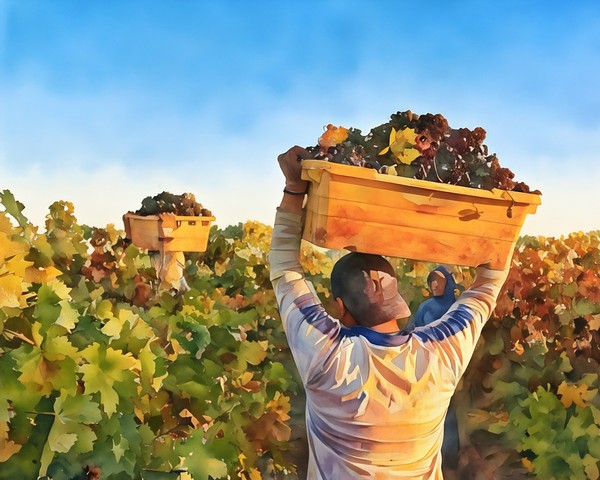
Artistic rendering of a caravan of Zinfandel pickers—ushered through the old vines like triumphant troops—on a colorful early autumn morning in Lodi wine country.
I spend a lot of time going over my own photos of Lodi wine country. The best ones, I think, are the accidents. It is one thing to see something beautiful in a vineyard. It is another to capture that beauty with a camera. If you're lucky you snap a photo that you find to be very expressive; but only later, when you are sitting at a desk.
More often than not, though, even with the photos you like the best, you wish they said more. Take, for instance, this close-up below of second crop Carignan grapes taken on a blindingly bright October morning, several weeks after the harvest. I don't know what you see, but what I see is that the grapes themselves are fuzzy, like purplish mud. Not nearly as scrumptious looking as when I saw them with my own eyes in the vineyard.
The camera's eye, on the other hand, captured the leaf's intricate network of veins⏤making me imagine random roadways on a distant planet like Mars⏤etched into the Carignan leaf, which was turning red and crinkly in the aftermath of the season, long after the green color necessary for photosynthesis was gone:
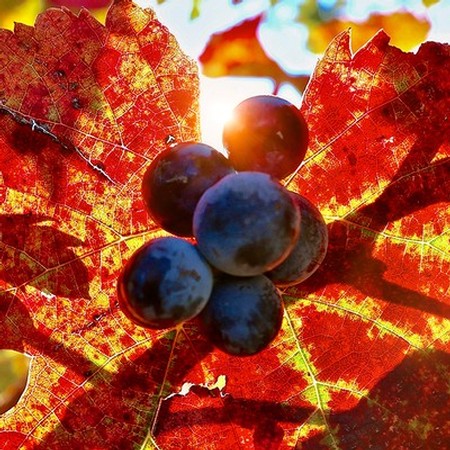
Playing around with an AI photo application, I discovered that I could get the exact same shot to take on a different meaning by taking it into a "watercolor" mode:
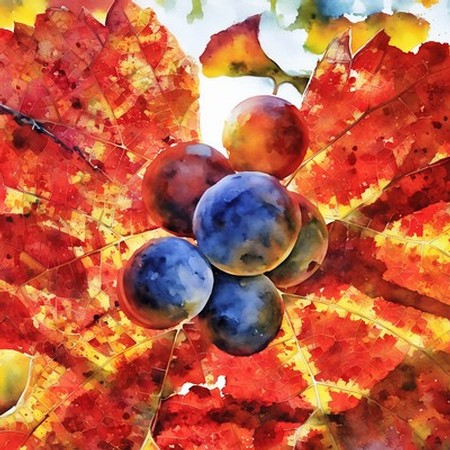
Whereas in the original photo, the camera's eye was transfixed by the electrical natural light shining through the leaf, in the watercolor translation I find more of the pure joy of the colors of autumn⏤the rich shades of red, orange, yellow, purple, blue and dying green mingling, layering and bleeding into each other, with bright splashes reminiscent of a Rasta themed tie-dyed shirt. It reminded me of why I snapped the photo in the first place—stopped by the compelling, eye-catching colors .
You can say that the second rendering of the Carignan is not as "real" as the actual photograph, but to me it is just as real because you are forced to see something that was there in the first place, which the camera did not capture as effectively. This change in perspective, uncovered after the fact, reminds me of what a British painter named Lucian Freud once said: “The longer you look at an object, the more abstract it becomes, and, ironically, the more real.”
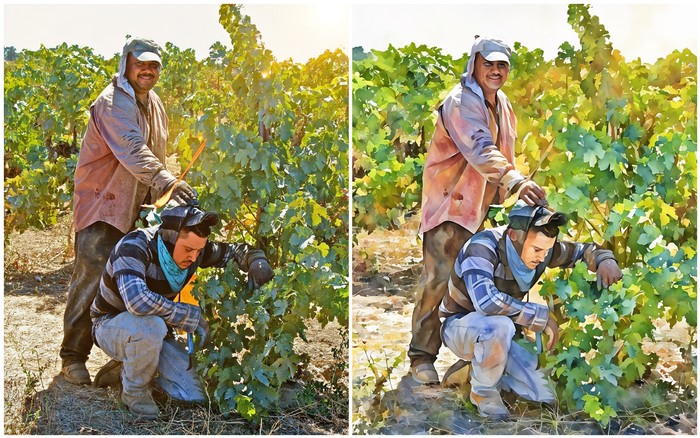
Two versions of old vine pickers pausing under the brutal sun on a 100-degree morning: The original photograph (left), showing a harsh light, the debilitating heat and sense of sheer exhaustion; a watercolor revision (right), softening the colors and taking an edge off the grit and griminess, expressing a more heroic aspect to this work.
Artificial Intelligence itself is an interesting topic. I was recently asked what I think about the growing use of AI software as a writing tool, especially for essays, reporting or journalism. The only answer I can give is that this could be the worse thing to ever happen because AI relies on the vast, messy universe of information. A lot of that information is, simply, wrong. Human beings are bad enough when it comes to spreading misinformation. Artificial Intelligence makes things worse by multiplying it.
Especially when it comes to wine. As a consumer, if you were to base all your buying decisions on what you read, chances are you would bat a very low percentage when it comes to finding a wine you actually enjoy. The palate is more like the eye or ear, when looking at a painting, walking through a garden, or listening to music. The only person who can determine what gives you actual pleasure is yourself, not something you read about in a book or online blurb—certainly not an AI source.
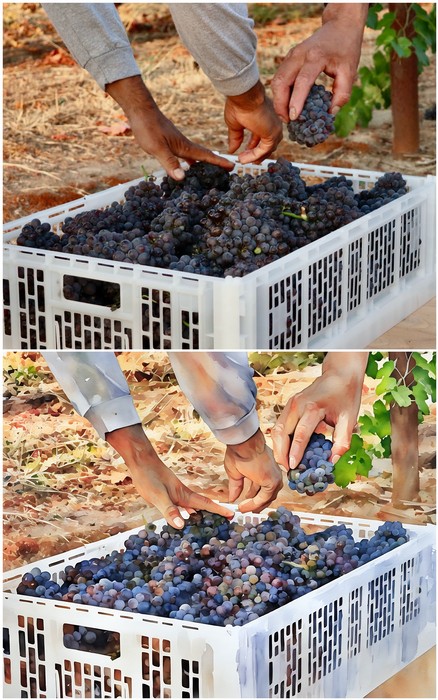
Reinterpretation of Lodi Pinot gris being field-packed in 36-pound boxes: In the original photo (top), the fruit is an indistinct black-purplish mash of colors; in the "painted" revision below, green, yellow, red and blue colors become more subtle and delineated, giving a better expression of why these black yet delicately pigmented grapes are actually used to produce white (rather than red) wines.
A big exception, though, is when AI is used to transform photographs. Sure, sure, it doesn't always work. Anyone can see that in the sea of unfortunate results on social media. Digitally altered images often ended up looking like the way the old The Doors song sounds: Women seem wicked... faces are ugly... when you're strange.
However, when put to good use, AI can help you find, what Jane Seymour once said about the use of watercolors in painting, "a lot of happy accidents." Even when altering brutal "realities" captured by the camera, the changing of colors and obscuring of distinctions can often help you appreciate details of a photo in a different and often more interesting slant of light. Just as artists do, in their interpretations of Nature or people, when they put brush to canvas.
That said, some happy results based on some of my own favorite photos of the recent past:
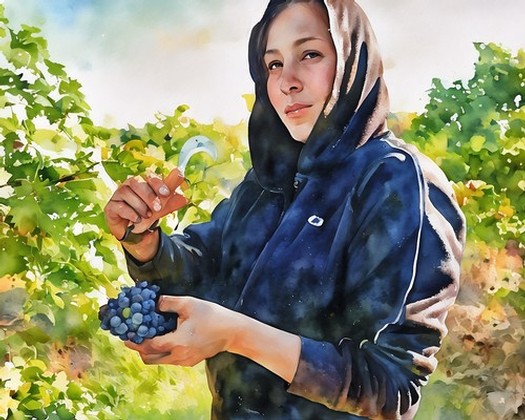
This portrayal of a Lodi old vine Zinfandel picker upped the idyllic factor. Becoming all about beauty: Beauty of the place, beauty in the face and succulence of the grapes, and beauty in the exacting, slashing work with the curved picking knife, constantly sharpened in the field to shuffle clusters off their mortal coils with breakneck speed.
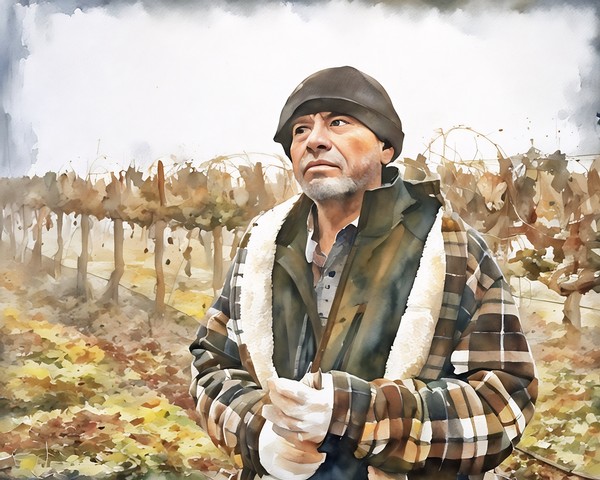
I found this Filipino-American grapevine pruner working solo on an icy cold, foggy, gray winter day, tackling a field of totally spent vines laden with brown crumpled leaves and shriveled unpicked grapes. He is pensive because he stopped to talk a little bit about the decades he's spent working farms up and down the Central Valley.
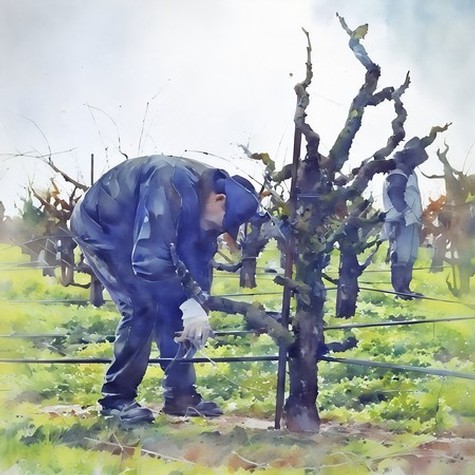
This rendering of winter pruning evokes the strenuous dance and backbreaking hand work executed by countless locals or migrants, year after year.
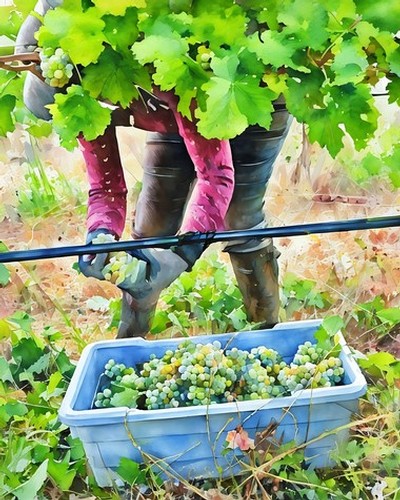
To me, grape picking can be like ballet, combining skill and stamina with grace, delicacy and economy of movement, which the colors of this transformation of a Lodi Kerner (a rare German grape) harvest seem to show.
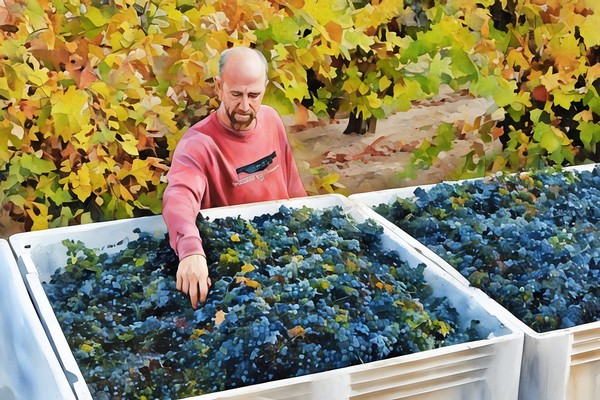
Grapes, grapes, grapes: I love how the confluence of watercolors show the beauty and bounty of the old vine Zinfandel harvest, depicting a grower (Todd Maley) belonging to one of Lodi's most enduring families, farming in the same square mile of the region's west side since the late 1860s.
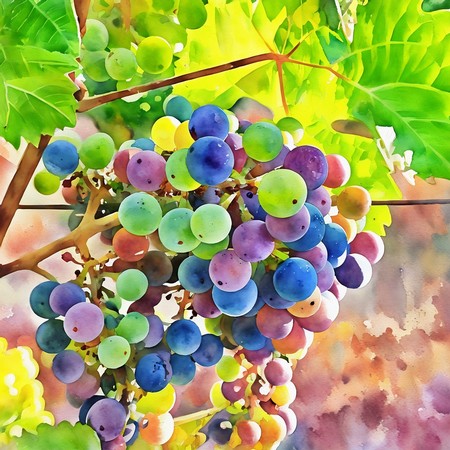
Veraison (i.e., change of color in grapes) is the time of year—typically during July in Lodi—when Nature seems to take a paintbrush to ripen fruit. In this artified image of Dornfelder, a grape of German origin, the kaleidoscope colors come across with splash and delicacy, lit up like individual Christmas bulbs by the mid-summer sun.
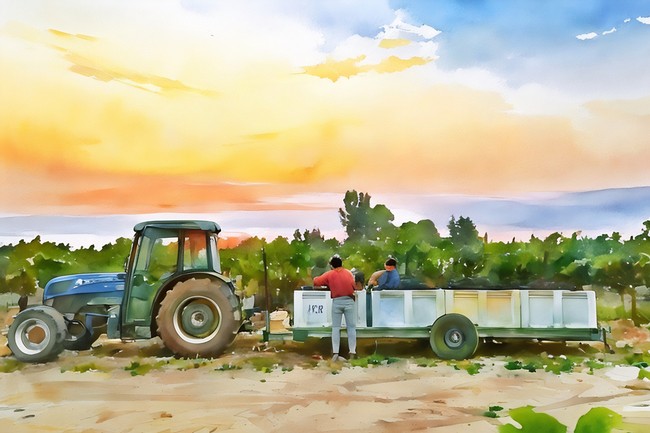
The early morning skies of the harvest season in Lodi are often glorious mixtures of blue, gold, reds and purples, very much like the mingling dabs of watercolor on a canvas.
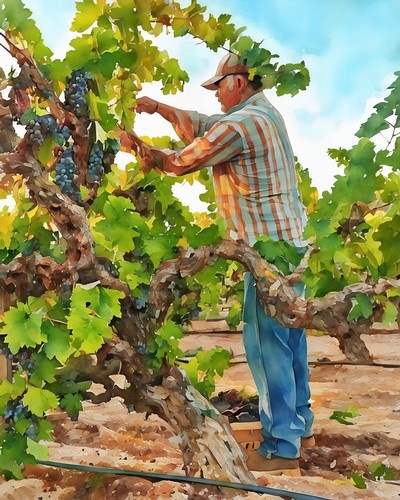
The muscular arms of tree-like Lodi Zinfandel of ancient age—in the case of this image, planted way back in 1889!—are stunning in real life, stunning in photographs, and equally stunning when reinterpreted like brushstrokes.
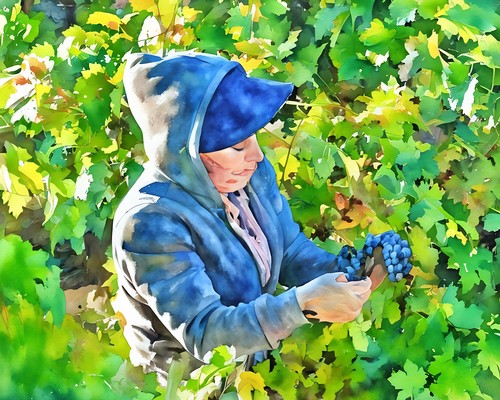
In occasional split seconds you catch a grape picker coddling a cluster (she is actually double-checking for rot) before dropping them into a lug box at their feet. In turn, the splashes of green color in this image emphasize the welcoming embrace of long limbed old vine Zinfandel plants.
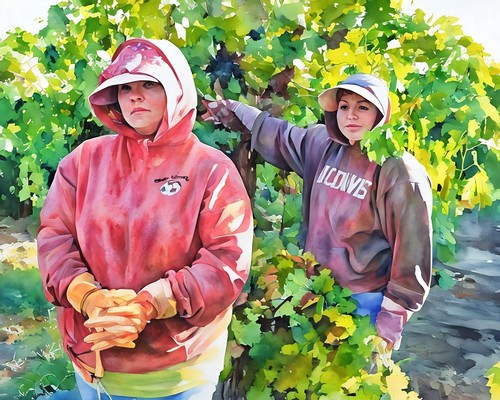
I captured these two old vine Zinfandel pickers during a brief break, waiting in almost prayerful repose for a tractor to bring up another set of macro bins.
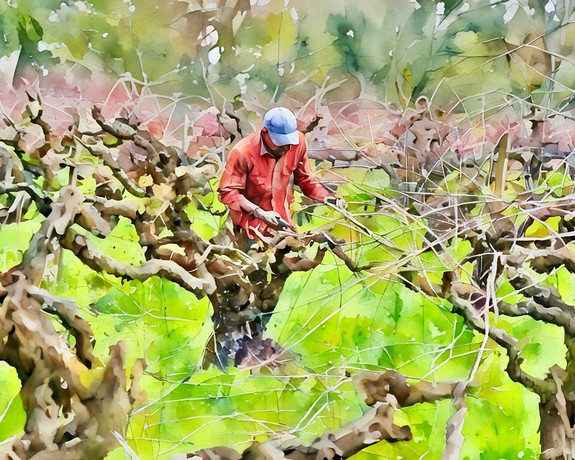
The original photo of this pruner attending to this monumental stand of ancient vine (over 100 years old) Lodi Zinfandel has long been a favorite; translated into splashes of watercolor, the thicket of bare branches forms almost stained glass window-like panes, giving a meditative feel to this moment.
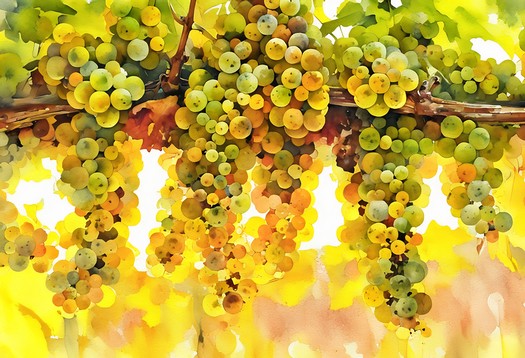
When rendered through a painter's eye, the splashy colors of these Riesling clusters bring out the physical interaction of grapevines with sunlight. You can feel the way the grapes eat up the energy of the sun to manufacture carbohydrates, which seem to explode from inside of each golden orb.
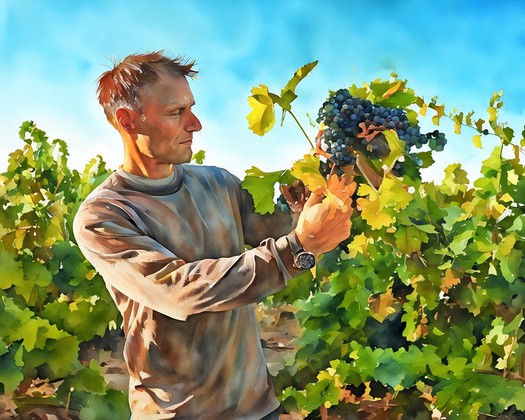
The outsized reverence and affection for nearly forgotten heritage grapes such as Carignan, held by Lodi's Swiss-born winemaker/grower Markus Niggli, shines through in the dappled, watery colors of this artistic rendering.
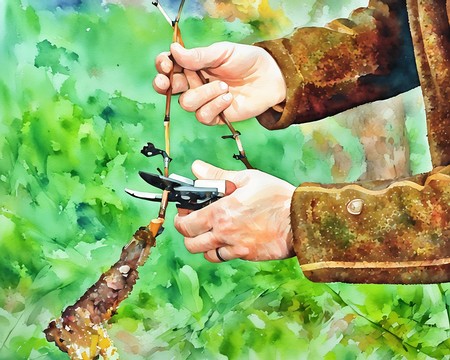
The altered colors transform this act of grapevine pruning into something of a Zen moment, expressing focus, rigor, consciousness of purpose and Nature.
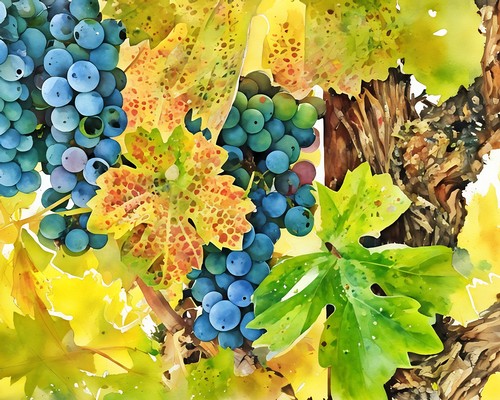
This transformation of a close-up of Zinfandel during the harvest season into all the shades of color possible, like a delicately applied paintbrush, captures the absolute loveliness of ancient vines in the Lodi appellation.
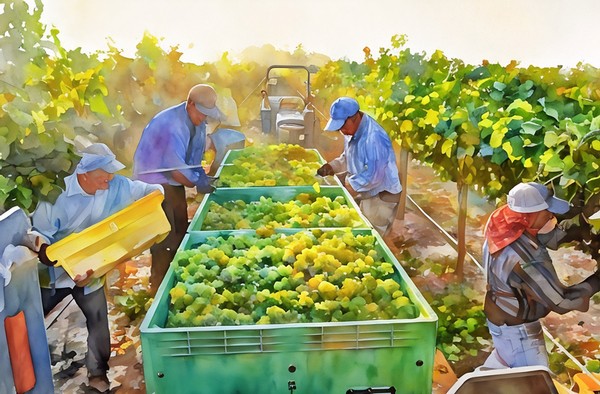
A great example, in this rendering of a Lodi Chardonnay harvest, of how brushed colors can blur human figures in order to accentuate movement and enhance the perception of Nature during this climatic time of year.
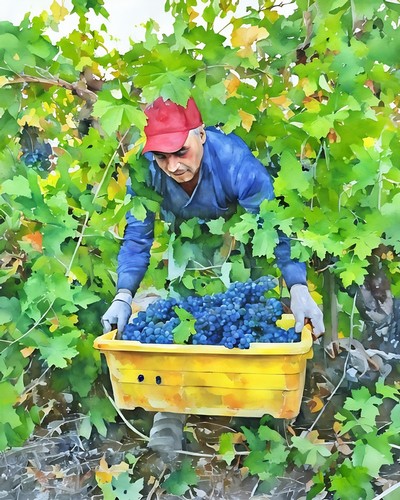
This artified capture of an old vine Zinfandel picker does more than evoke a specific act. To me, it confirms the powerful, enduring marriage of humanity and Nature—something that has lasted millenniums (yet today, myopic pundits fret about the "future" of the wine industry)—which reaches a peak in the production of artful or terroir-expressive wines, which is exactly what you can taste in many of Lodi's old vine bottlings.
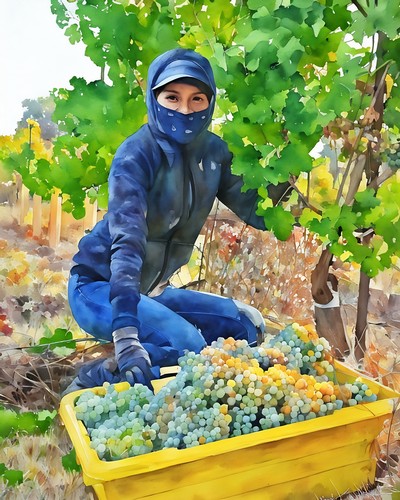
In the original photo the focus was on the grape picker; in this revision, it's on the way the sunlight plays upon the Kerner grapes like a benediction from above.
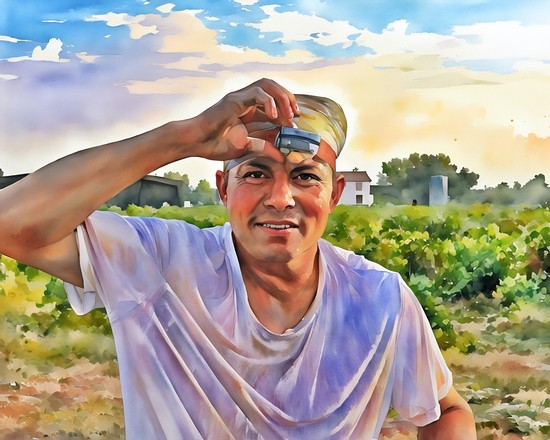
I caught this jovial image of a grapevine picker early one morning. He had just stripped off his hoodie to reveal a perspiration-soaked tee, still wearing a headlamp used to pick in the dark before sun-up (he explained that his crew started picking at 2:00 in the morning).
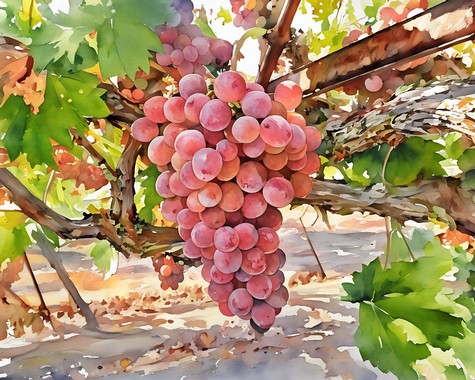
I will never tire of images of Lodi's historic Flame Tokay grape, made all the more brilliant by artistic colors.
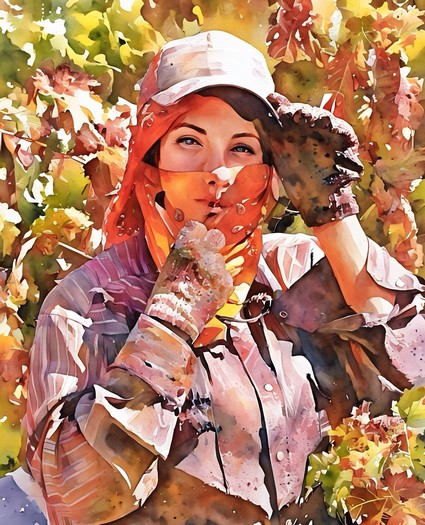
On one terribly hot day I asked this old vine Zinfandel picker to pause for a portrait. What's different about this transformation is that in the original photo, the bottom of her face was completely concealed, her bandana giving full protection from the dust. In the revision, her face is suddenly more visible, the bandana more like a transparent veil out of the Arabian Nights. It is, as if, a story is now being told.
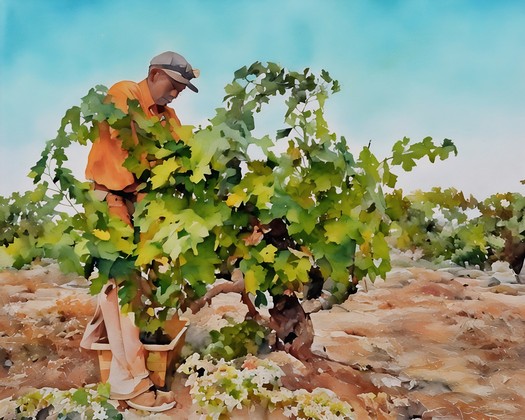
Man, sky, dirt, ancient vine Lodi Zinfandel... poetry.
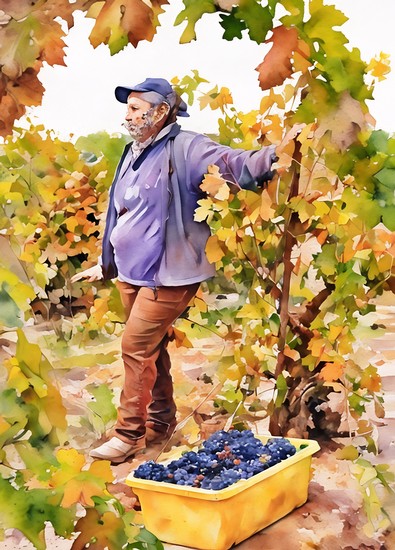
Final pause for thought: Another arrested moment showing the beauty and generosity of ancient vine vineyards (many of them over 50 or even 100 years old!) during a Lodi harvest morning.